Thinking about becoming an Amazon seller, but the thought of inventory management gets your heart rate pumping?
Dropshipping is the ideal model to sidestep this stress, enabling you to start your Amazon business without any initial investment in stock.

Amazon boasts over 300 million consistent customers and rakes in half a trillion dollars annually. But you don’t have to be a gargantuan business to carve out a niche here. A significant chunk of Amazon’s profits stems from independent vendors, a lot of whom run small to medium-sized businesses. Such sellers account for more than 60% of Amazon’s total sales. Consequently, if you’ve been contemplating dropshipping, Amazon could be your ideal platform.
To get started with dropshipping on Amazon without any upfront costs, you can explore using a free supplier and implementing no-cost marketing strategies. Additionally, consider utilizing the individual plan on Amazon, which allows for selling at no charge, although it incurs a fee of $0.99 per item sold. With careful product research and strategic selection of a reliable supplier, it is possible to kickstart your Amazon dropshipping endeavor with minimal financial commitment.
Introduction to Dropshipping on Amazon
Dropshipping is a supply chain management method where you, the store owner, don’t keep goods in stock. Instead, when a customer makes a purchase, the order is forwarded to a third-party supplier, who then ships it directly to the customer.

Pros
- Start a business without needing to purchase and store inventory
- Little startup capital is required
- Virtually no risk – you only pay for products when someone places an order.
- Dropshipping software makes it easier to find reputable suppliers
Cons
- Hard to compete with other businesses that offer the same products
- Managing product returns can be a hassle
- Dropshipping offers small profit margins – and Amazon fees can cut into them significantly.
- Amazon gets your customer data.
As per Amazon’s dropshipping policy, you must identify yourself as the merchant for all your items, including all packing slips and related information that accompany them.

Note that Amazon’s policies strictly prohibit you from procuring items from another online retailer to have that retailer send the items directly to your customers, especially if the shipment doesn’t recognize you as the official seller.
Believe it or not, you can start dropshipping on Amazon with almost no initial investment. Sure, there might be some small costs, like hosting or using an ecommerce platform for your online store. But, these expenses are measly when compared to starting a traditional business. It’s as budget-friendly as it can get. And don’t fret; we’re here to help you kickstart your Amazon dropshipping journey on a tiny budget.
Finding Niche Products to Sell
It’s essential to carefully consider the type of product you want to dropship. Not every product out there will be a lucrative choice; making the wrong choice can lead to significant losses. Instead, you should focus on finding unique dropship products with high demand yet low competition.
Unearthing these sparkling treasures in the vast online marketplace arena demands accuracy, but don’t lose hope! With assets like Helium 10 and Jungle Scout, you can scrutinize the demand for products over time to identify items in high demand but with little competition. Never forget that a popular niche might just be your golden ticket to thriving in dropshipping on Amazon.

Consider factors like the size, weight, and cost of the products. Smaller, lighter products are cheaper to ship, which helps to preserve your profit margin. Low-cost items tend to sell more quickly, but you’ll want to balance this with finding products that are still valuable enough to make a good profit on each sale.
Remember, the more research you put into finding the right product, the more likely you will succeed in dropshipping on Amazon without any upfront investment. Never underestimate the power of a well-researched product!
Keep your customers in mind throughout this entire process. What are they interested in? What kinds of products are they likely to buy? Understanding your consumer base will give you valuable insight into what kinds of products you should be dropshipping.
Product selection may seem challenging, but with careful research and thoughtful consideration, you’re sure to find a profitable niche that suits your dropshipping ambitions.
Researching Profitable Suppliers
To start dropshipping on Amazon without any upfront costs, you would need to find dropship suppliers willing to dropship for you and list their products on Amazon.
In the dropshipping universe, recognizing the significance of identifying lucrative and trustworthy suppliers is paramount. These are the building blocks of your Amazon dropshipping venture, enabling you to run a business model free of any upfront financial risk. The crux of the matter is discovering these suppliers cost-effectively and hassle-free.
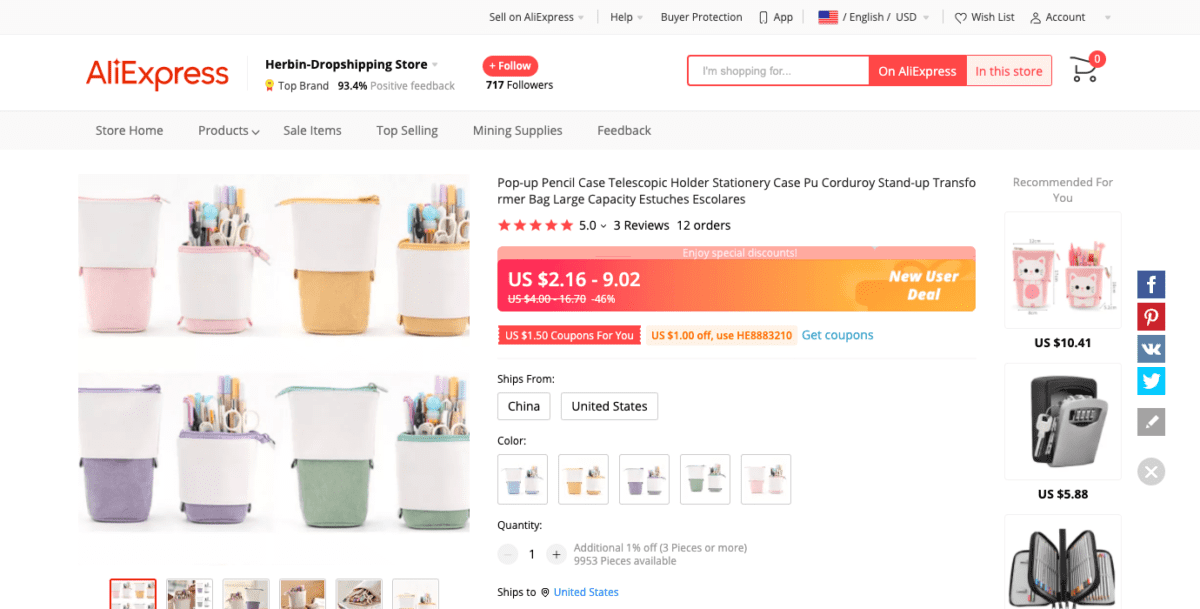
Let’s dissect the process of finding the right suppliers. At the onset, get yourself accustomed to online directories like Alibaba, AliExpress, Doba, Worldwide Brands, and Wholesale Central. These sites act as supplier labyrinths bursting with a plethora of options. Enter your product of interest and get ready to be spoiled for choice.
But let’s press the brakes for a bit here. Our aim isn’t merely to identify a supplier but one whose relationship with us will be mutually beneficial. Two crucial ingredients for this are the pricing and delivery of their dropshipping products.
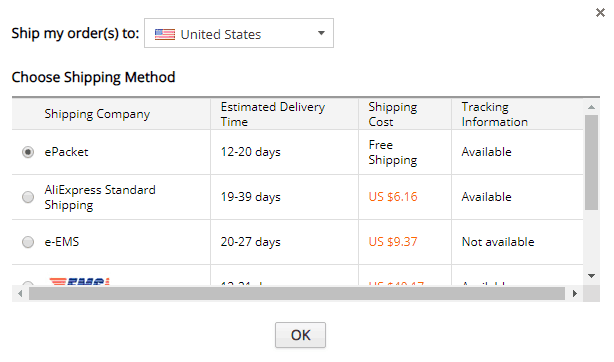
Start by critically assessing the product range offered by the potential supplier. Look out for testimonials from other dropshippers or consumer reviews. Do they tilt positively? They can be useful indicators of product quality.
Next up is pricing. Your chosen supplier should proffer a price that leaves room for a healthy profit margin after you’ve considered Amazon’s seller fees. Make it a point to closely examine their pricing structure in their policy details.
When pinpointing the right suppliers, don’t hesitate to put some tough questions forward. Assess their response speed, production capacity, shipping policies, and return procedures. On top of all, confirm whether they offer dropshipping services. Their answers to these questions will help you gauge if a supplier is profitable, dependable, and a good fit for your Amazon dropshipping operations.
Key Attributes to Consider in a Dropship Supplier:
- Positive consumer and dropshipper testimonials.
- An affordable pricing structure ensures a healthy profit margin after Amazon’s seller fees.
- Close geographical proximity to your target customer base.
- A fast response time to queries and problems.
- Adequate production capacity.
- Acceptable shipping policies
- Transparent return procedures.
- Provides dropshipping services.
- Proof of authorization to sell specific brands
- Does not require access to your Amazon Seller Account
Avoid Scammers Trying To Get Your Money
Part of making money isn’t losing money, right?
Be watchful for suppliers who want upfront fees. While some genuine suppliers may charge for dropshipping services, many legitimate ones do not. If a supplier pushes hard for upfront payment without real proof of product quality or fulfillment efficiency, it’s a red flag.
Similarly, if the supplier’s prices seem too good to be true, they probably are. Always compare prices among different suppliers to understand what’s reasonable. Astonishingly low rates can indicate poor-quality products or potentially fraudulent operations.
Additionally, a legitimate supplier should always provide traceable shipping methods. If a supplier cannot provide tracking information for their shipped goods, there’s a good chance they’re not running a reliable operation. It’s a prudent measure to always ensure to have shipment confirmation for every product you sell.
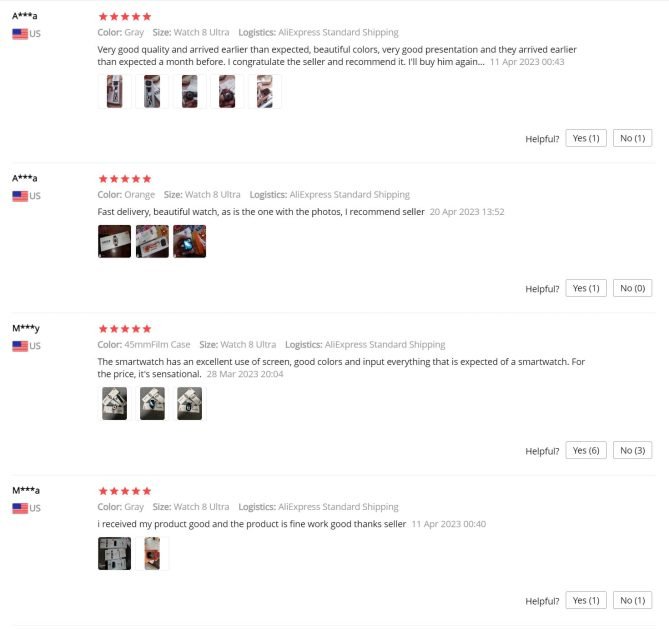
No matter how enticing a deal might seem, always carry out due diligence by checking the reputation of the supplier. Review their website, speak directly with their representatives if possible, and read every review you can come across. Treat the process like a job interview, because establishing a relationship with a supplier is indeed a serious long-term commitment.
Order Samples Before You List Products
Once you have a few product ideas you should order samples before listing them on Amazon. A quality supplier makes it easy to order samples for your review before you decide to sell online. This ensures you’re selling a quality product, essential to building a reputable dropshipping business.
Always be prepared to switch suppliers if you’re not achieving the desired results. Having contingency plans and exploring multiple supplier options can make the process of moving on significantly less disruptive when necessary.
Creating an Amazon Seller Account
Embracing the world of Amazon dropshipping often begins with the crucial step of setting up an Amazon Seller Account. Let’s dive into how you can achieve this without spending a dime.
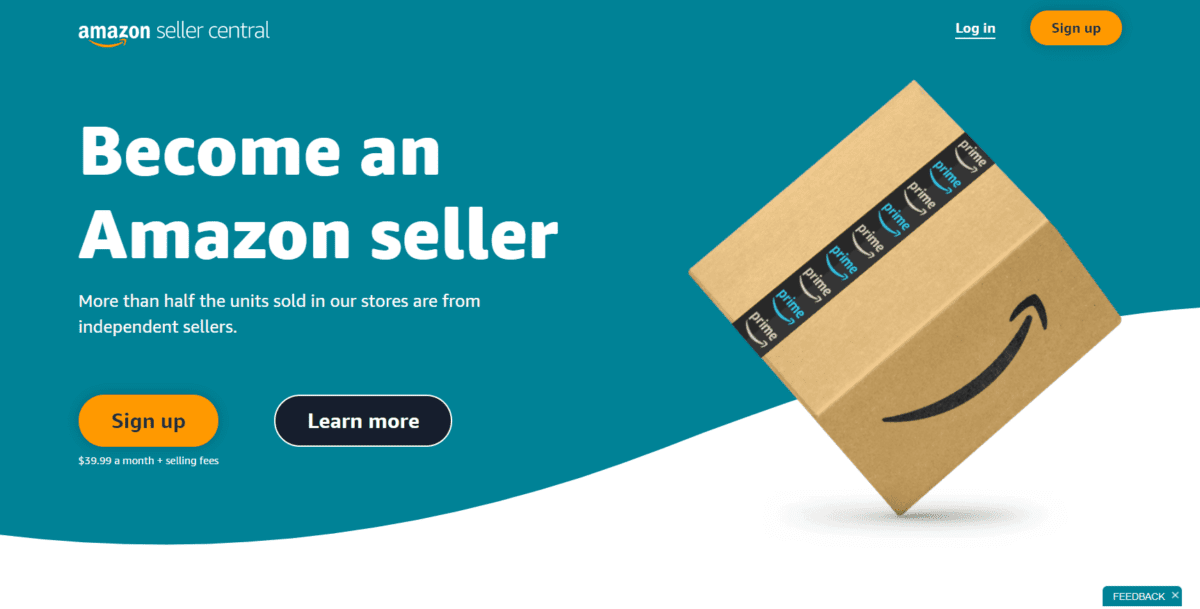
There are two main plans for selling on Amazon: the Individual plan costs $0.99 per unit sold, while the Professional plan charges a $39.99 monthly subscription fee, regardless of units sold. There are also additional selling fees, such as referral fees, variable closing fees, and per-item fees, depending on your chosen plan and the product category you are selling.
To begin with, navigate to the Amazon Seller Central homepage and locate the ‘Start Selling’ option. Don’t worry; despite the bold call to action, setting up this account won’t cost you anything upfront. You’ll go through a few steps, including entering your name, email, and a new password. Then, you’ll verify your email and continue to the next section.
Amazon will require business details in the next step. If you don’t own a business yet, you can enter your full name in the “Legal name” field. Similarly, for the “Business address,” use your current physical address. At this stage, there’s no need to panic or invest in a separate business entity or office space.
Seek Category Approval (If applicable)
Depending on the products you sell, you may need approval in the appropriate product category. You’ll need approval for:
- Grocery and Gourmet Foods
- Jewelry
- Music
- Video, DVD & Blu-ray
- Watches
Connect Your Amazon Account to Your Ecommerce Platform
Once you’ve got your Amazon account approved, connect your account to your ecommerce platform. Exactly how you do this depends on the platform you use.
Generally, you’ll log in to your ecommerce platform, add the Amazon app or sales channel, then log in to your Amazon seller account to link the two together. Shopify is a great platform for setting up a dropshipping store.
If you use Shopify, follow these instructions:
Visit your Shopify admin dashboard. Next to Sales Channels, click the + button. From there, a pop-up box will appear. Click Amazon and click the + box.
You can also opt to use the Shopify Marketplace Connect App.
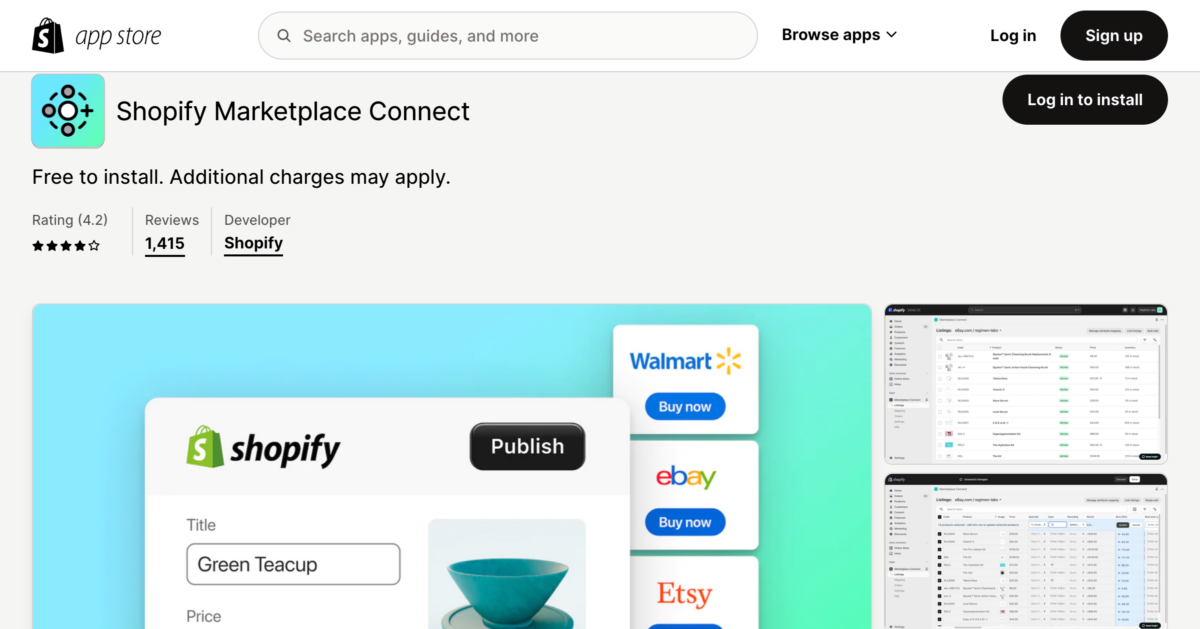
Setting Up Your Online Storefront
An appealing online storefront on Amazon is key for any successful dropshipping operation. Your storefront is the face of your brand, making it important to craft that first impression carefully. Here, we’ll go through the steps necessary to set up your online store, following the guidelines on Amazon’s official website.
1. Choose Your Storefront Name: To begin, select a unique, memorable name that aligns with the items you plan on selling and the market you wish to attract. Keep in mind that it is important to avoid using names already used by other businesses to avoid trouble down the line.
2. Join the Amazon Brand Registry: It’s important to register your brand to maintain greater control over your product listings. It allows you to enhance your brand content, increase brand recognition, and gain legal protection from Amazon. You can register by providing your brand’s name, a government-registered trademark number, and a list of your brand’s product categories.
3. Personalize Your Storefront: Once you’re registered and your brand is verified, you can tailor your online store’s look and feel. Amazon provides templates that allow you to adjust your store’s logo, banners, layout, and featured product selection.
4. Add Products To Your Ecommerce Platform: You can pull products directly into your Shopify store and push them to Amazon. Many dropshipping suppliers will be able to supply and fulfill your Amazon orders. Many ecommerce platforms will automatically sync to update the listings to the inventory in your Amazon store dashboard.
5. Optimize Your Listings: After uploading your product information, it’s time to make your items available for purchase. Use keywords strategically within your product titles and descriptions to make your products more visible within Amazon’s search results.
Managing Inventory and Order Fulfillment
Picture yourself juggling on a unicycle. You have to keep everything in rhythm to ensure a smooth ride. That’s what managing inventory and order fulfillment looks like when dropshipping on Amazon. The trick is to uphold customer satisfaction and adhere to Amazon’s policy on order fulfillment.
First things first, monitor your supplier’s inventory like a hawk. You don’t want to be in a situation where you’ve sold a product that’s not in stock. Regular interaction with suppliers and consistent updates on your product listings are crucial. While this might sound exhausting, there are automation tools that can ease the task. The goal is to present correct and up-to-date inventory information on your Amazon storefront.
Order fulfillment is the crux of the dropshipping business model on Amazon. The concept is straightforward: a customer places an order, and you pass it on to your supplier. From there, the supplier packs and delivers the order straight to the customer. Again, communication is king. It’s important to ensure flawless and timely communication with your supplier to meet Amazon’s order fulfillment policy.
Be aware that delays or mishaps in shipping can adversely affect your customer satisfaction rating and impact your status as a seller on Amazon. Thus, setting realistic delivery schedules and keeping customers in the loop regarding their orders is essential. Provide tracking information as Amazon’s policy requires and be ready to step in if there are hold-ups or complications. Remember, from the customer’s view, you’re in charge.
In summary, managing inventory and order fulfillment wisely can set you on track for a prosperous dropshipping venture on Amazon without investing a dime. Much like juggling on a unicycle, maintaining a careful rhythm ensures a smooth ride – for you and your Amazon customers!
Best Practices For Running A Profitable Amazon Dropshipping Business
Building a successful Amazon dropshipping enterprise needs strategy, knowledge, and consistency. Here are some key practices to help you start a profitable dropshipping business.
Frequent Market Research
Catching and staying on top of trends is critical in the realm of dropshipping. Spotting trends and understanding market shifts can be the difference between a thriving business and one that falls flat. You can accomplish this by regularly taking a look at the market. An excellent way to stay updated with what’s in high demand is by researching Amazon’s “Best Sellers.” This can provide you with a solid idea of the products consumers are currently gravitating toward.
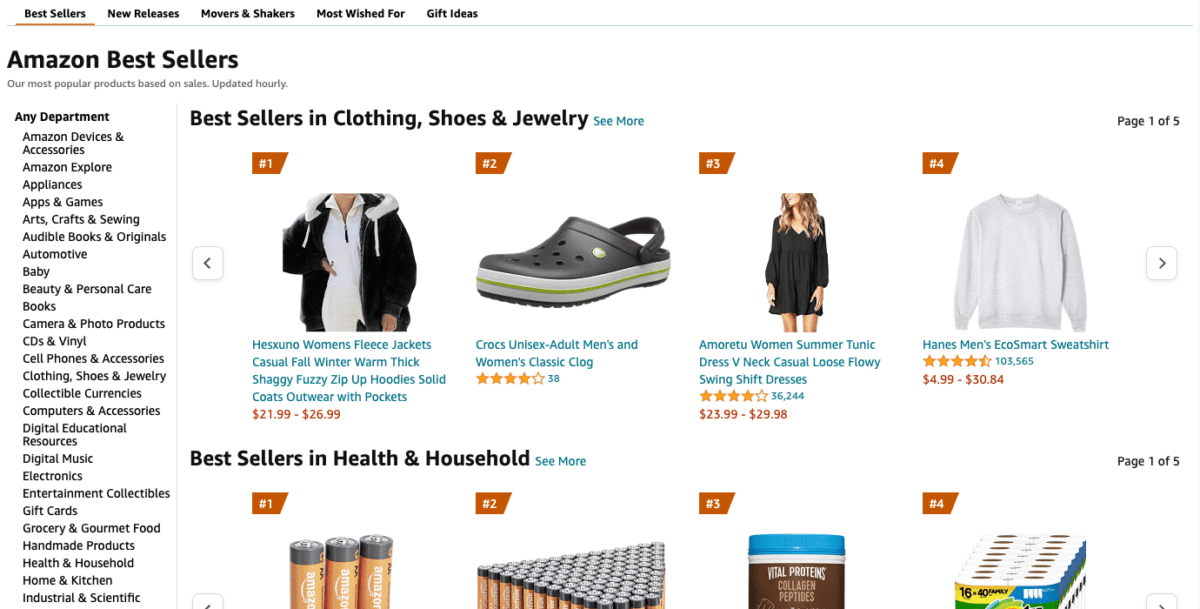
Yet another strategy is leveraging tools that can prove to be incredibly helpful in picking out hot products. Tools like Helium 10 and Google Trends can offer valuable insights, helping you select winning products. They can give you a real-time glimpse of what’s popular, gaining momentum, and dropping in consumer interest.
Competitive Pricing
The key to your success revolves considerably around pricing. Establish your prices while keeping in mind the fees specific to Amazon, costs associated with your supplier, and expenses incurred for shipping. Utilizing repricer tools like Amazon Repricer will ensure you maintain profitability amidst fluctuating market conditions.
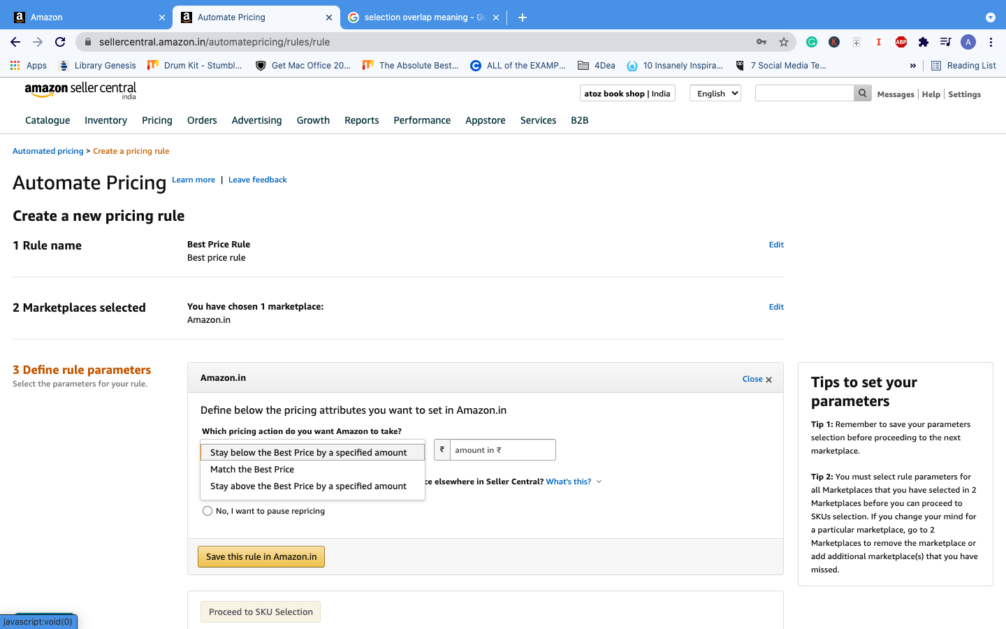
Quality Control
Beyond simply selecting your suppliers, you must go the extra mile to periodically check the quality of products through means such as sampling. This step ensures that the products shipped to your customers meet their expectations and accurately match the product descriptions. It’s crucial you remember that in the world of dropshipping, you might never handle the products you’re selling. Hence, such tactics act as a security blanket to protect your reputation and maintain the quality of your reviews.
Subpar quality or inaccuracies can have a detrimental effect on your dropshipping business’s reputation. Negative customer reviews due to poor product quality can quickly lead to declining sales. Therefore, a strong supplier partnership and regular quality checks can be your key to thriving in the Amazon dropshipping space without upfront investment.
Social Media Marketing
Rather than pouring heaps of dollars into paid ads, we’re using organic ways to increase visibility. What’s more, spending sizable amounts on paid advertising without having tested the waters isn’t a great idea when your primary aim is to dropship without money upfront.
Leveraging social media platforms such as Instagram, Facebook, and Pinterest can go a long way. A dedicated presence on these platforms will not only increase brand visibility but also engage with your target audience directly. Creating a brand story, highlighting customer testimonials, and regular interactions can make you more relatable and trustworthy to potential customers.
Working with influencers or bloggers in your niche can be highly effective. They can bring in their followers to your customer base. You could offer them free products for review, or collaborate on content creation that promotes your products subtly.
Amazon SEO
Boost your product visibility with Amazon SEO. Use strategic keywords and high-quality images for better ranking and sales. To ensure your products get the attention they deserve, use Amazon’s A9 algorithm. This ranking process dictates where your products will appear in search results. To optimize your product listings using A9, include relevant keywords in your product titles, descriptions, and backend keywords. Also, regularly reviewing and updating these keywords based on current market trends is critical in maintaining your products’ visibility.

Furthermore, high-quality images play a crucial role in buyer decision-making. Remember, your customers cannot physically touch or examine your product; they solely rely on these images to understand its features and quality. As per Amazon’s guidelines, opt for crisp, clear images that accurately represent your product, preferably with a white background. Offering multiple views and close-ups can be beneficial, too. High-resolution images can significantly enhance the appeal of your listings, promoting buyer engagement and potential purchases.
Email Marketing
Email marketing is a cost-effective method to connect with your Amazon clientele and potential customers. Begin by harnessing the power of Amazon’s ‘Manage Your Customer Engagement‘ tool to collect emails from shoppers who show interest in your store. Product reviews become a useful tool here; having positive reviews on your products not only convinces new customers but also gives you a chance to reach out to previous customers for feedback. Success in Email marketing hinges on your ability to deliver engaging, tailored content that resonates with your Amazon customer base.
Make regular reviews a staple in your newsletters. Show off your high-quality items backed by customer testimonials, and don’t forget to promote your less-reviewed products to garner more attention. The opportunity to review products can also double as engagement with customers, increasing loyalty and encouraging return customers. Always strive to dish out regular newsletters featuring reviews to keep your audience hooked. The more consistent and targeted your emails, the better your chances of success.
Customer Service
Understanding and managing your customer service and returns is integral to successfully navigating the Amazon dropshipping landscape. Since you are not spending your money on inventory, much of your investment can be spent on ensuring top-quality customer service.
Amazon customers have a certain level of expectation for customer service. Meeting and exceeding that expectation could be the difference between your store’s success or failure. For you, that means actively engaging with any queries, concerns, or feedback. Responding promptly to customer inquiries and troubleshooting effectively is key.
Return Management
Just as critical to your success is managing returns. When a customer initiates a return request, you manage that request to its conclusion. That includes refunding the customer’s money or arranging for a new product to be shipped. Remember, this won’t cost you anything because of the dropshipping model, where suppliers handle the inventory.
The upside to this model is that you don’t need to deal with the physical side of returns. However, you must coordinate the entire process between your customer, Amazon, and your supplier. Thus, strong communication is a must.
Having a comprehensive plan for handling customer service and returns efficiently will strengthen your customer relationships, boost your seller reputation, and ultimately, influence the success of your dropshipping business without any upfront investment. Never underestimate the power of ensuring customer satisfaction!
Alternatives To Dropshipping on Amazon
Despite the appeal of dropshipping, it’s not a one-size-fits-all business model for everyone. Some challenges may give a potential business owner pause. In dropshipping, you rely on suppliers to keep stock and deliver on time, and a lack of control can lead to customer dissatisfaction. There’s also intense competition, especially on popular platforms like Amazon. With thin profit margins, you often walk a tightrope between turning a profit and being undercut by price. Now, let’s explore some alternatives:
- Wholesale: Purchasing large quantities from a manufacturer and selling them usually offers higher profit margins. However, you’ll need up-front capital and a place to store your inventory.
- Private Label: Buy generic products, slap your own branding on them, and sell them. This requires a bit more investment, but the potential for greater profits and brand recognition makes it a worthy consideration.
- Affiliate Marketing: Promote someone else’s product and earn a commission on every sale through your referral link. You don’t have to worry about inventory, shipping, or customer service; you’re just promoting and selling. You can do this with a blog or an Amazon affiliate store.
- Fulfillment by Amazon (FBA): With the Amazon FBA model, you buy products and send them to Amazon, and they take care of storage and fulfillment. It comes with more upfront costs than dropshipping but can also bring higher profit margins.
Scaling Your Dropshipping Business Without Upfront Investment
So, you’re ready to scale your ecommerce business but not quite ready to put down a bunch of cash up front? Not a problem! It’s all about leveraging the resources and capabilities at your disposal to the max. Let’s dive into how you can do just that.
Firstly, you want to ensure your existing operations are running smoothly. If any cracks or glitches exist in your current processes, now’s the time to address them. Consider implementing automated tools for processes like inventory management and order processing. This improves efficiency, and with many of these tools being budget or even free, it’s an excellent low-cost option.
Reinvest profits: Before you think about borrowing money or dipping into your savings, look at your business up until now and consider reinvesting the profits. Remember, the goal is to avoid spending money you don’t have, and reinvesting your earnings can be one of the best ways.
Foster relationships: Another essential concept in scaling is maintaining strong supplier relationships. This not only secures your product source but can also lead to better negotiating power, including price, delivery times, and minimum order quantities. This strategy doesn’t cost anything but your time and effort.
Optimize your offerings: You can expand your product range by adding new products from your existing suppliers or roping in new suppliers. Ensure you select products wisely, focusing on profitability, popularity, and alignment with your storefront.
Expand marketplaces: A great way to grow without heavy investment is expanding into new marketplaces. You’re already on Amazon, so consider platforms like eBay, Etsy, or even your own standalone website. The cost is typically low, and it can open your business to wider audiences.
Ready to Dropship On Amazon?
Scaling a dropshipping business without upfront investment can seem challenging, but remember, it’s definitely achievable with the right mindset and strategy. Stay focused, be strategic, and, most importantly, keep your costs in check!
It is entirely possible to dropship on Amazon without exhausting your savings, especially if you’re keen on minimizing your initial expenditures. Create a plan of action and follow it faithfully. Let’s acknowledge a foundational point – keeping costs at bay is materially significant!
With careful budgeting, you can operate your business for under $500. This estimate typically encompasses unavoidable expenses such as Amazon fees, website and software charges, market research tools, etc. All these seemingly small expenditures can accumulate, and if you believe that you won’t need to invest any money, you might find yourself knocked for a loop. By planning ahead, managing your expectations, and budgeting wisely, you’re setting yourself up for a successful journey in the world of Amazon dropshipping!









